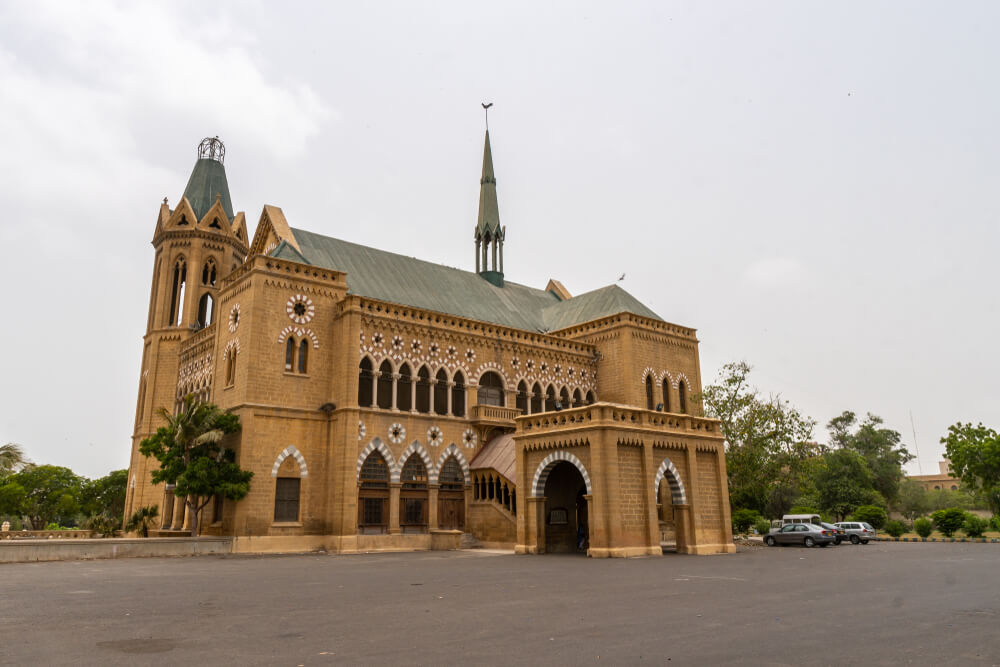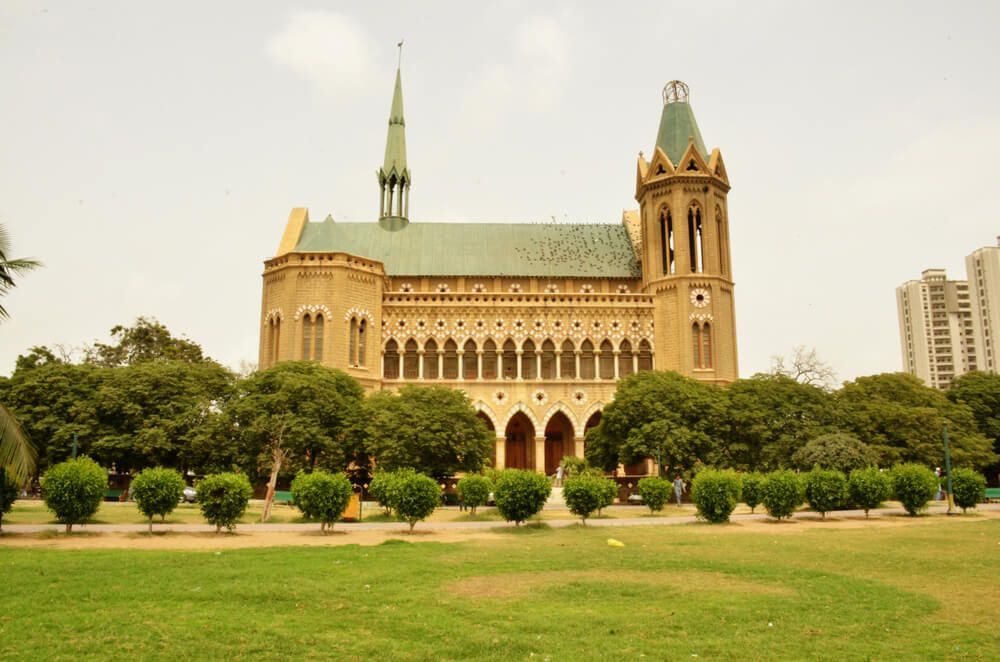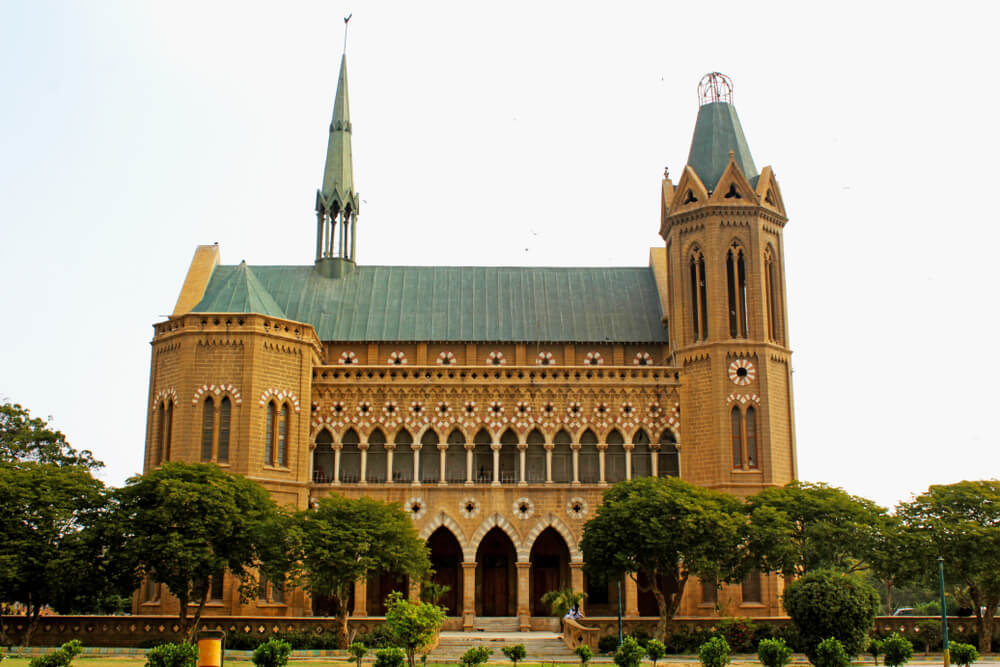Frere Hall Karachi
Karachi is widely prevalent among visitors for many reasons, and it is the perfect blend of city life with scenic views. It has vast domains of history, art, food, and sandy beaches, and one can never get bored in a city like Karachi. Karachi is famous for many entertainment options, which are also on a vast scale because of the increasing population. Once you visit any public place or beach, many people enjoy their day, increasing over the weekend. While discussing the best places to visit in Karachi, Frere Hall stands very high on the list. It is one of the top attractions for visitors from outside and residents. Its lush green gardens are the perfect picnic spot for people. If you’re looking for an exciting piece of history and stunning architecture, add Frere Hall to your list of places to visit.
History of Frere Hall
It is one of the British era’s most critical and historic architecture. I Frere Hall is one of the most iconic landmarks in Karachi, and it’s no wonder why. The building is eye-catching and an icon on its own. It looks beautiful from near and far. Even if you are driving by, it never fails to catch your attention. It is built in a unique gothic manner, which is very different and striking from other architectural units. The building was constructed in 1865 and still stands strong today, despite the many tests of time it has faced.t was built in honor of Mr. Henry Frere for his services in economic growth. He also helped in making the Sindhi language official and legal for Sindh. Britain designed it in 1865; it was used as a residence by King Edward VII and Seth Dinshaw. Frere hall holds very significant importance in history.
The structure was expected to act as Karachi’s municipal center and was planned by Henry Saint Clair Wilkins. Henry Wilkins was systematically selected for the planning. He was chosen before 12 other organizers.
The structure’s property was bought at the expense of 2,000 British Indian rupees. The all-out cost of the Hall was around 180,000 rupees, paid out by the city’s municipality and the government of Karachi.

The total period led to the conclusion they lasted two years.
In 1877 at Frere Hall, the main endeavor was to shape a steady arrangement of badminton rules. Following the passing of Sir Henry Bartle Edward Frere in 1884, the structure was renamed in his honor. Frere was a British chairman known for advancing financial improvement in Sindh, as well as making the Sindhi language the language of organization in Sindh, as opposed to the Persian language, which had been leaned toward by the Mughals.
Following the custom of Pakistan, the corridor’s library was renamed Liaquat National Library. The library is one of Karachi’s biggest and houses an assortment of more than 70,000 books, including uncommon, rare, and written ancient manuscripts by hand.
The lobby’s roofs were adorned by the widely acclaimed Pakistani craftsman Sadequain during the 1980s, with one wall painting staying deficient after his passing in 1987. Several works by Sadequain are tracked down in the corridor and structure of what is known as the “Galerie Sadequain.”
Karachi, the previous capital of Pakistan, is the nation’s biggest city and fundamental business focus and the capital of the Sindh region in the lower Indus valley. The knowledge of experiences of this port preceding the eighteenth 100 years as a port on the Arabian Sea northwest of the mouth of the Indus is inadequate. However, its being ancient is an accepted fact. It has been recognized as Krokala, the port visited by Alexander the great’s armada in 326 BC. In any case, it remained humbly unknown until the British victory of Sindh in 1843. They continued to foster the harbor of Karachi and change it into an important port. Brought up in memory of Sir Bartle Frere, Commissioner of Sind, 1851-1859, Frere Hall was planned by Colonel Clair Wilkins, whose proposition was chosen from 12 sections in the principal’s compositional plan rivalry for a public structure in Sindh.
Underlying 1865 utilizing the neighborhood yellowish limestone, the expense of Frere hall development was covered through unrestricted gifts. The structure was the center point of Karachi’s social exercises and was filled in as a Town Hall with regular public gatherings, shows, and theatrical exhibitions. Gardens were added around it by Benjamin Flinch in 1887-88. The nurseries are presently called Bagh-e-Jinnah, and the structure, which has been significantly rearranged in Islamic style by a Pakistani craftsman, currently houses a library.
The Architecture
If you’re looking for an architectural wonder to explore in Karachi, look no further than Frere Hall. Frere Hall is one of Karachi’s most beautiful and intricate pieces of architecture. It was designed by Lt. Col. Clair Wilson and 12 other architects, but only Wilson’s design was chosen. The Hall was constructed using 180,000 and took two years to complete.
Every detail about Frère hall is unique and intriguing, and It also has substantial indoor space. At the same time, the doors and windows are designed to perfection as per 1800’s true essence. The style of the Hall is Gothic and Venetian, with a touch of British and Pakistani components. Some of the features of the gallery include flying buttresses, quatrefoils, ribbed vaults, and pointed arches. Walk inside Frere Hall and be dazzled by the painted ceiling – an intricate mural by Sequin. If you’re an art lover, you can explore the Liaqat National Library next door, which holds a wealth of knowledge on various subjects. Frere Hall was implicitly based on the Venetian-Gothic style that likewise mixes components of classical British and contemporary engineering. The structure includes numerous sharp curves, ribbed vaults, et cetera. The engravings and carvings on the walls and flawlessly expressed mosaics are apparent on various divisions and pillars.

The structure is constructed principally out of neighborhood yellow-conditioned limestone, with stone-based subtle artistry with white stones, which are acquired from the town of Bholari. Red and dark sandstone is additionally utilized in the structure, which was quarried from the Sindhi town of Jungshahi. The lobby is encircled by two yards initially known as “Sovereign’s Lawn” and “Ruler’s Lawn,” which after autonomy were renamed as Bagh-e Jinnah, or “Jinnah Gardens.
Liaquat library at Hall
After British rule, the part of Frere hall was converted into a colossal library, also known as Liaquat Library, In an ode to Liaquat Ali Khan. It contains rare books and scripts, and it is the most extensive library in Karachi, which has about seventy thousand books.
It is an open library for everyone but doesn’t receive many visitors, and many books are left to collect dust without proper maintenance.
The library has been closed for a while but is now undergoing renovations. Or, if you’re not into books, there are still plenty of things to see in this magnificent building!
Mesmerizing Gardens
Frere Hall has excellent outdoor space and huge gardens packed on the weekend. It is one of the most popular places among visitors and residents. Any room can be amplified by adding plants and shade, and visitors spend hours sitting outside and passing their time. People often bring their picnic to the garden and enjoy a lovely evening out.

It is also an excellent photo spot because of its lush green plants and grass. You can enjoy the outdoors or book your tickets for exhibitions and events indoors.
Exhibitions & Hub of Festivals
Frere hall is the hub of many sorts of Exhibitions and caters to many celebrations of festivals. It is home to an exhibition, be it cultural, art, or food festivals. Frere hall is the best spot because of its unique indoor and outdoor space. It is the best place for seasonal celebrations and painting exhibitions. You can stroll around the garden and enjoy your evening while participating in shows, festivals, or as a guest.
This place perfectly combines architecture, history, social activities, exhibitions, and festivals. It is also a safe space for literary meetings, theatrical performances, concerts, and community-building activities. Make sure to take permission and check with the administration before indulging in any activity.
Frere Hall Ticket Price
There is no entry fee; however, for events and exhibitions, you need prior permission and pay a booking fee to the administrators. It is always open to the general public; check timings before leaving the house.
Frere Hall Timings
It is open from 9 am to 5 pm for the general public. Frere Hall remains closed on Sundays.
Location
It is located on Fatima Jinnah Road, Karachi, which is considered a posh and prime location.
FAQs
Who built Frere Hall?
It was built under British Raj by Britain.
When was Frere Hall built?
It was built around 1865
Why is Frere Hall Famous?
It holds a historic value due to its architecture and design from the British era, and it was made as a tribute to Mr. Henry Frere for his services.
What is inside Frere Hall?
There is a library known as Liquat Library, which has up to 70 thousand books and ample space for events and exhibitions.
Can we visit Frere Hall?
Yes, it is open to the general public all year round.
